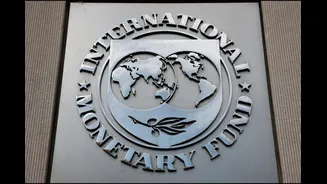Global Economic Insights
The economic dynamics of countries worldwide are in a constant state of flux, influenced by technological advancements, international trade agreements,
and global events. Understanding where the wealth will be concentrated is crucial for businesses, investors, and anyone interested in the future economic climate. Projections for 2025 paint a vivid picture of which countries will likely have the highest average income per person. The analysis takes into account GDP growth, employment rates, and the impact of the digital economy. These factors are interconnected and shape a nation's financial status, influencing everything from the standard of living to the availability of resources and opportunities within the nation.
Top Performers Unveiled
Predicting the future with absolute certainty is impossible, but analysts use advanced economic models to project future wealth distribution. The top 10 countries likely to offer the highest average income per person in 2025 are diverse, encompassing nations from different continents. This list indicates which nations are showing robust economic growth or benefiting significantly from industries like technology, finance, and natural resources. These countries often have strong educational systems, advanced infrastructure, and favorable regulatory environments, which help drive high productivity and attract foreign investment. The specific rankings may shift due to global developments, yet the general trend reveals where the wealth is most likely to be concentrated in the near future.
Factors Driving Income
Several key factors contribute to a country's high average income. Firstly, a highly skilled and educated workforce is essential, as it drives innovation and boosts productivity across industries. Secondly, efficient infrastructure, including advanced transportation networks and robust digital connectivity, enables smoother business operations and trade. Thirdly, stable political environments and transparent governance create investor confidence, which leads to increased capital flows. Additionally, economies that embrace technological advancements and adapt to the digital age are better positioned to foster high-paying jobs and economic growth. Finally, countries with significant natural resources often see increased wealth but must manage those resources responsibly to achieve sustainable economic growth.
Europe's Economic Powerhouses
Europe continues to be a major player in the global economy, with several countries expected to feature prominently among the highest average income earners in 2025. Nations known for their high living standards and robust social safety nets often have a strong foundation for financial success. Countries like Switzerland, Norway, and Luxembourg, with their established financial sectors, technological prowess, and skilled workforces, are likely to maintain their strong economic positions. These countries are characterized by high levels of innovation and quality education systems that equip their citizens with the necessary skills to thrive in a globalized economy. The strength of their economies lies in their adaptability and investment in human capital.
Asia's Rising Economies
Asia is experiencing significant economic growth, with several countries projected to become economic powerhouses in the coming years. Countries like Singapore, Japan, and South Korea, known for their technological advancements and global trade, are expected to continue their positive economic trajectory. These nations have invested heavily in education, research, and infrastructure, which has enhanced their global competitiveness. Furthermore, their strategic geographical locations and strong trading relationships provide them with access to major global markets. The growth of Asia's economies indicates a shift in the global financial balance, with nations in the region playing an increasingly pivotal role in global financial markets and economic innovation.
The Americas' Contribution
The Americas also contribute to the list of nations with high average incomes. The United States, with its large economy and entrepreneurial spirit, is likely to remain in a leading position. The country has a substantial role in technological innovation, healthcare, and financial services. Canada, with its abundant natural resources, stable economy, and focus on innovation, is also poised for continued economic success. Both countries have robust economies driven by diverse industries and a focus on attracting foreign investment. They also feature highly skilled workforces and advanced infrastructure, ensuring a high quality of life for their citizens and a competitive edge on the global stage.
Evaluating Emerging Markets
While developed nations usually dominate in terms of average income, some emerging markets could make significant strides by 2025. Countries with large populations, like China and India, are experiencing rapid economic growth, which, while not always translating directly into a high average income, indicates their potential. Factors such as infrastructure, technological integration, and economic reforms will be crucial for these nations to see substantial increases in their income metrics. Emerging markets need to focus on skill development and sustainable economic models to sustain their growth and provide more opportunities for their citizens. Their progress offers important insights into how the global financial landscape is shifting and how emerging economies can rise.
Implications for India
Although not specifically listed among the top 10, India's economic potential deserves consideration in the discussion of global incomes. With a large population and rapidly growing economy, India's development trajectory will be important. Factors such as infrastructure, economic reforms, and investments in education and healthcare will determine India's progress. India's economic performance will affect its global standing and contribute to the evolution of the global economy. By carefully managing its resources and focusing on sustainable economic growth, India has the opportunity to improve the standard of living for its citizens and become a more influential economic player on the world stage.
Adapting To Change
The economic landscape is not fixed; it is continuously evolving. The countries that stay ahead will be those best prepared to adjust to global trends. These countries must develop and adapt to new technologies, embrace changes in trade, and respond to environmental concerns. Governments, businesses, and individuals need to invest in skills that are relevant in the future, such as digital literacy and creative problem-solving. Furthermore, they need to cultivate resilient economic systems that can weather any potential crises. Continuous learning, innovation, and a proactive approach will be essential to maintaining financial prosperity in a dynamic world.
Looking Ahead
Forecasting the future of economics is complex, but it offers important insights. The top 10 countries with the highest average incomes in 2025 will represent a blend of established economic giants and emerging leaders. These nations exemplify the influence of innovation, education, and strategic investments in their success. As the world evolves, monitoring these economic trends can help everyone navigate the global economy. The economic outlook is expected to drive investment strategies and help nations achieve sustainable prosperity. The factors shaping the top-income countries provide valuable lessons and guidance for future development.
















